

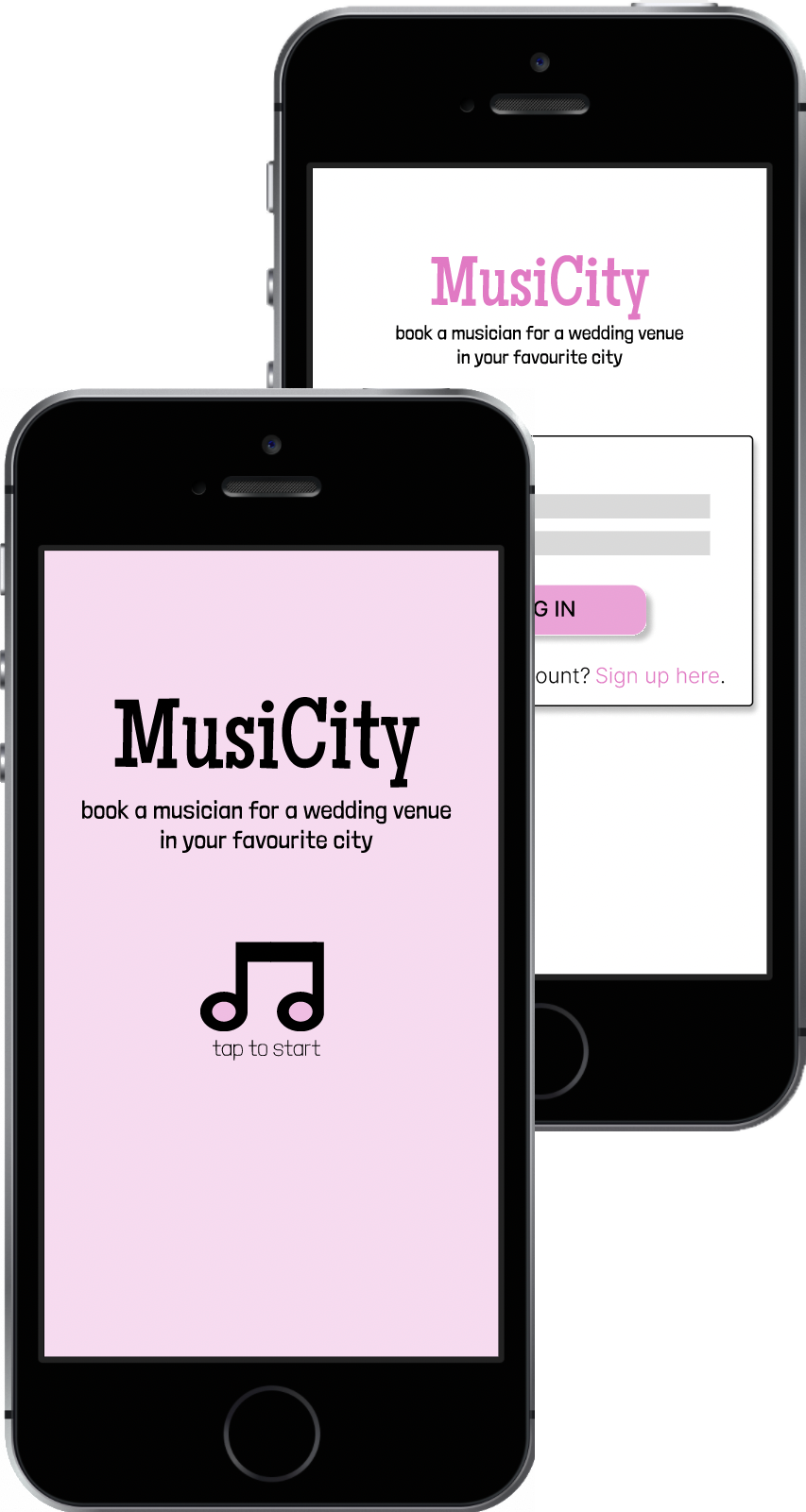
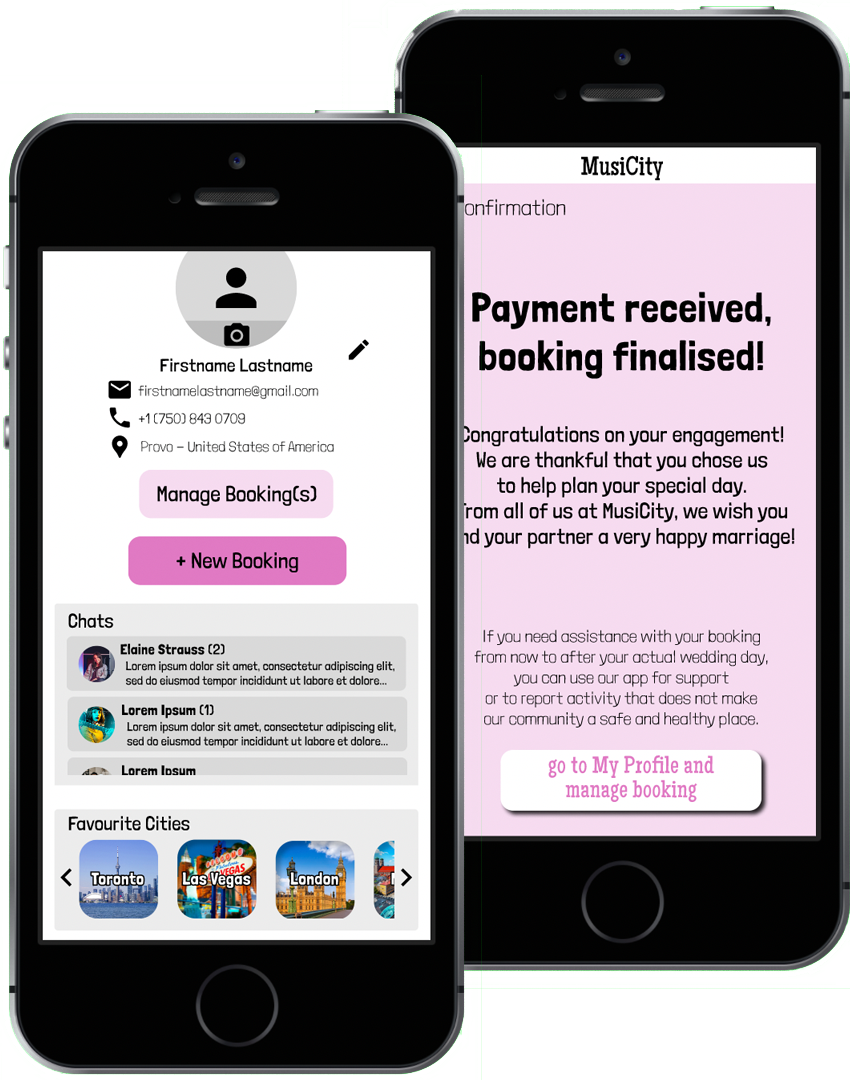
MusiCity is a musician booking app for a wedding venue in a user’s favourite
city.
It takes user preferences into account and offers information to enable users to choose a
city,
and then is a platform to book an available musician for their wedding venue.
MusiCity
targets users who are getting married, and acts as a tool for professional wedding planners.
September 2022 - October 2022
People who are engaged often get stressed and overwhelmed
with the many aspects
and considerations of wedding planning.
Design an app that aids in part of the wedding planning process: deciding on the destination of the wedding as well as booking a musician for the wedding day.
UX Designer designing the MusiCity app
from conception to delivery.
Creating user personas, performing competitive auditing and reporting, user journey mapping, paper and digital wireframing, low and high-fidelity prototyping, conducting usability studies, accounting for accessibility, and iterating on designs.
I conducted interviews and created empathy maps to understand the users I’m
designing for and their needs. A primary user group identified through research was engaged couples
going through many stressful thoughts and processes when planning their wedding ceremony. A secondary
user group identified was professional wedding planners who could use a tool to aid them in their
job.
These user groups confirmed that wedding planning is often stressful and that there is
currently a gap in the market for a tool where information on cities can be provided along with the
ability to book a musician in a chosen city. Other user problems include lack of diversity, inclusion,
and accessibility in current market options.
There is so much information overload to consider when planning a wedding and the whole process can feel overwhelming.
Many existing wedding services are very heteronormative and non-inclusive.
Many services end support when an event is over, but sometimes users may
require
support after events too.
Weddings can be a very personal event so users often want their personal preferences to be reflected.
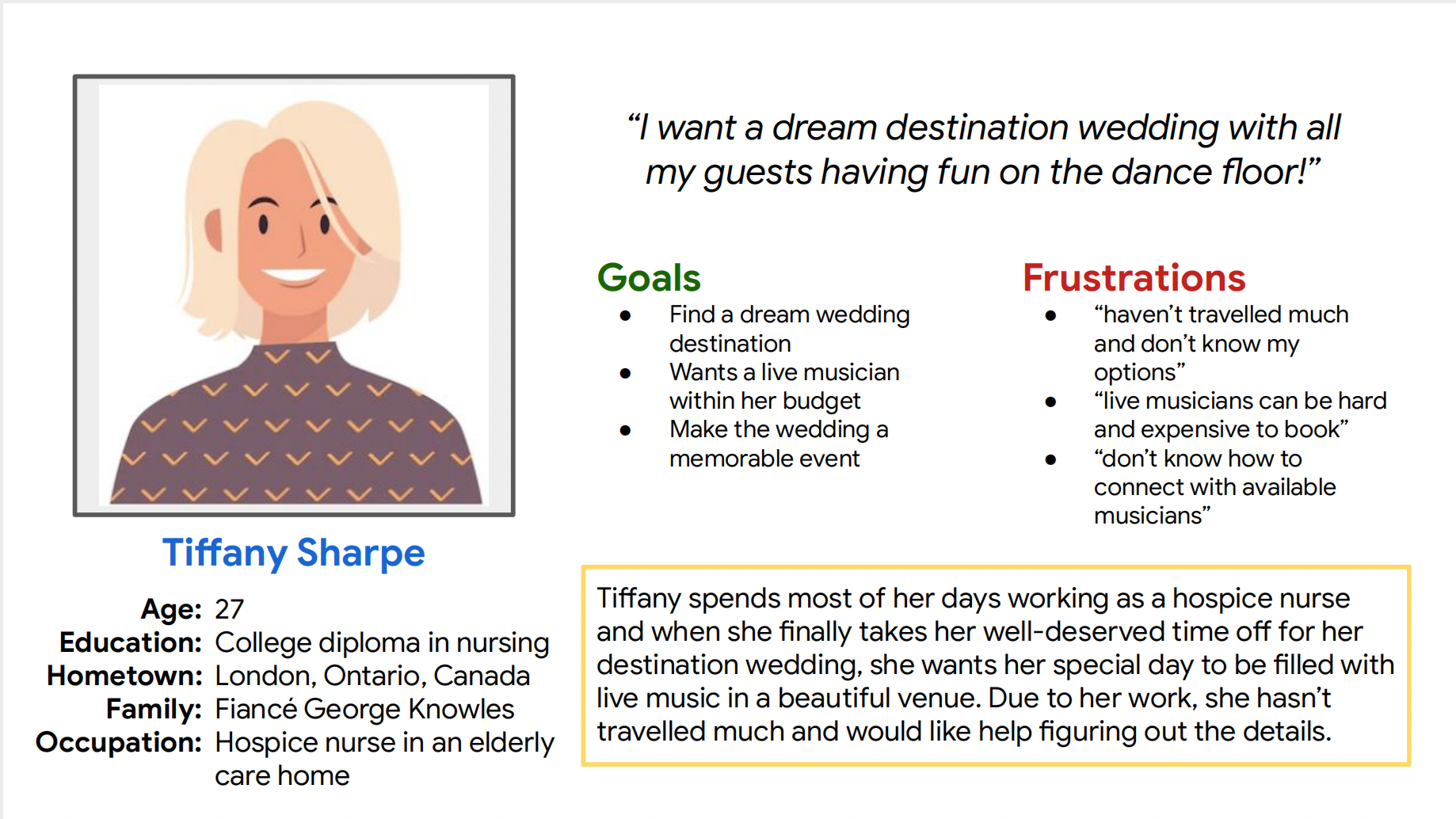
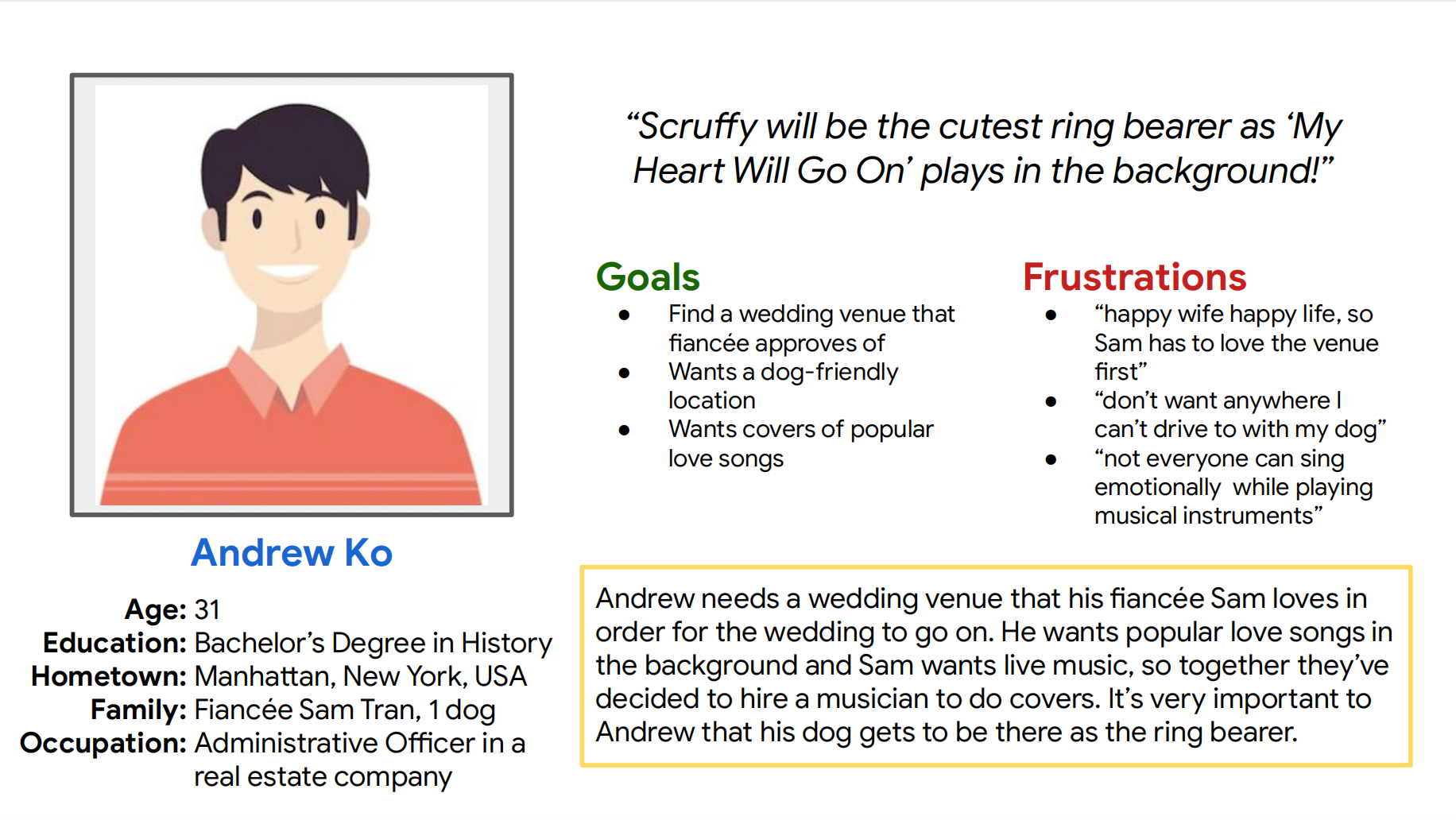
Mapping Andrew’s user journey revealed how helpful it would be for users to have a tool for finding wedding venue cities and hiring musicians within one app.
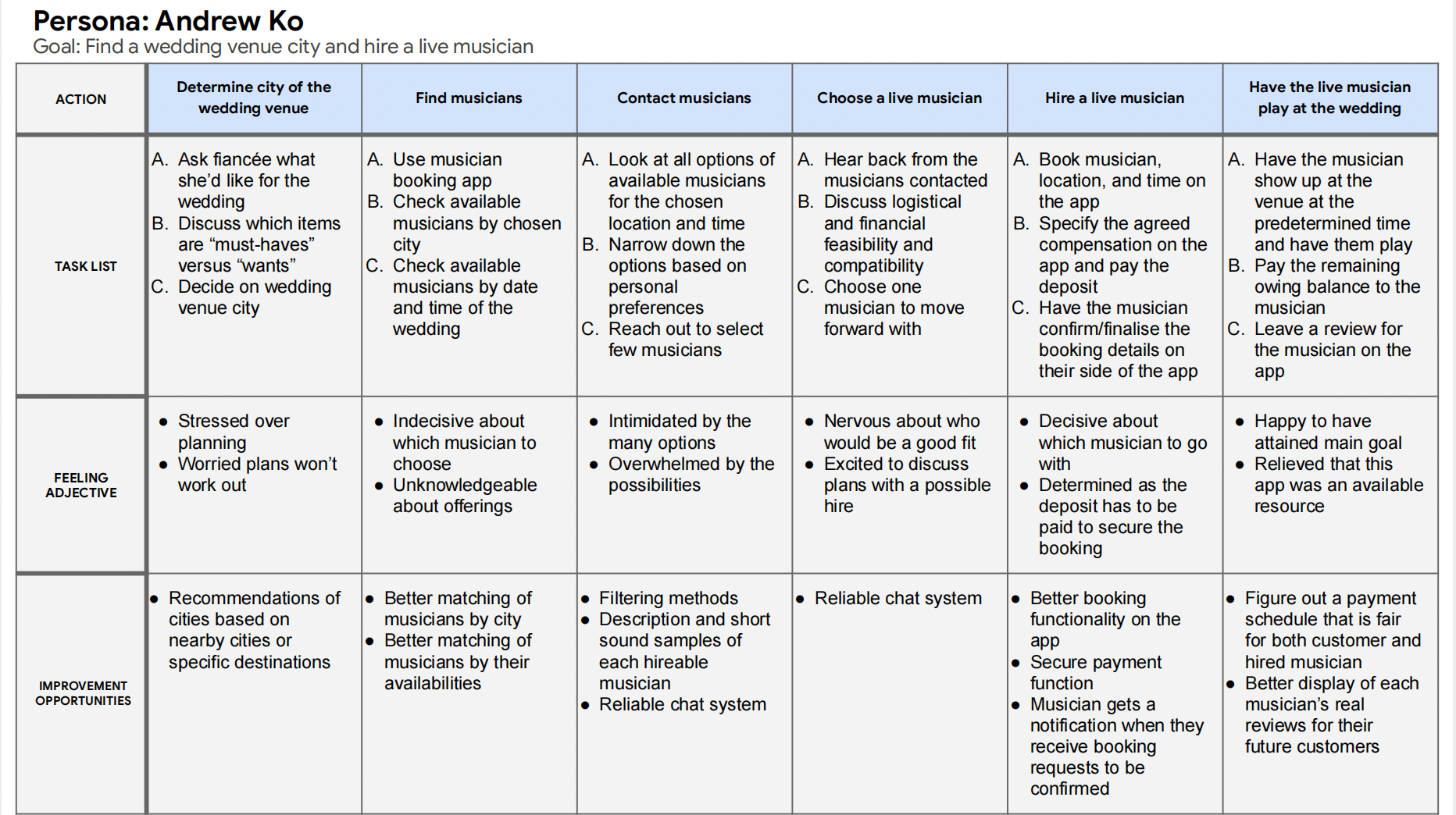
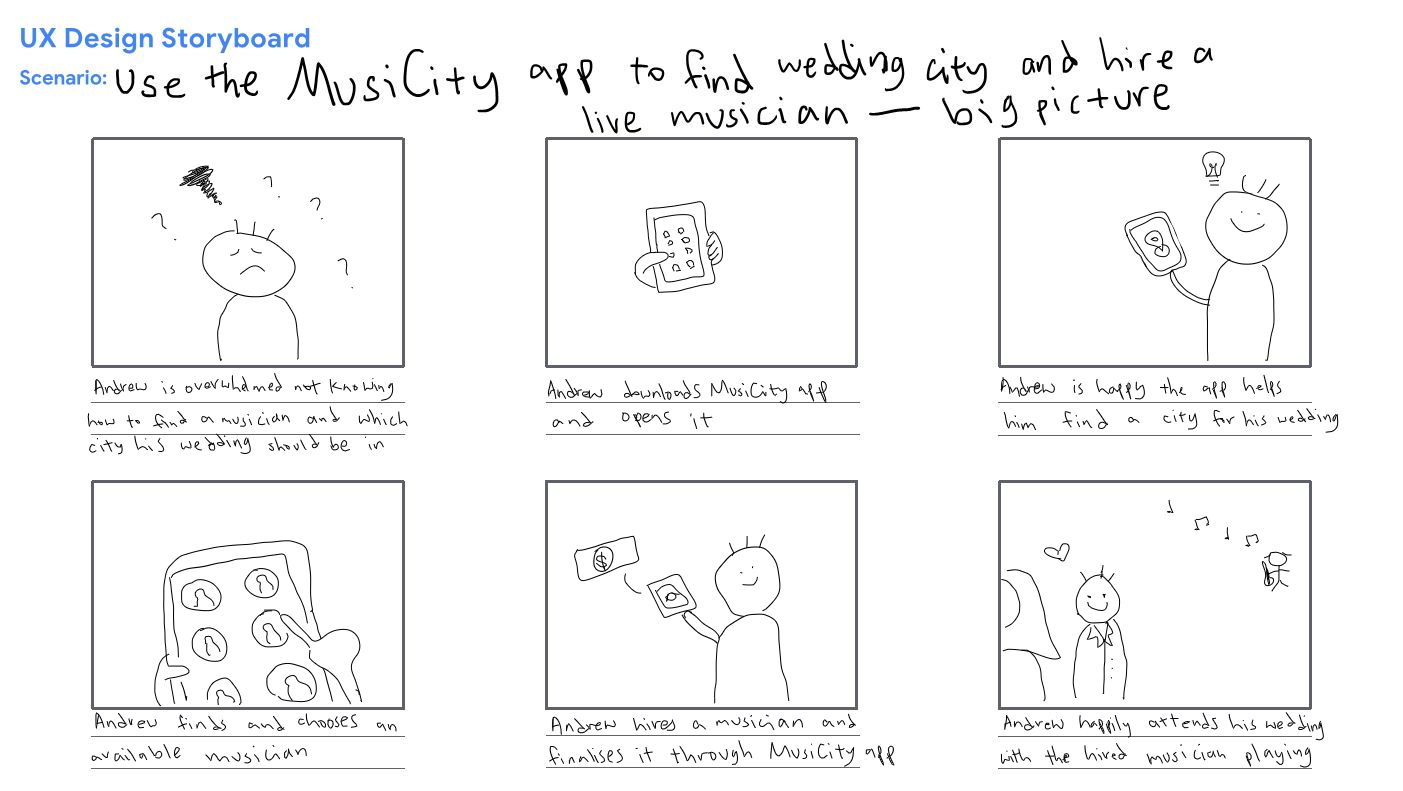
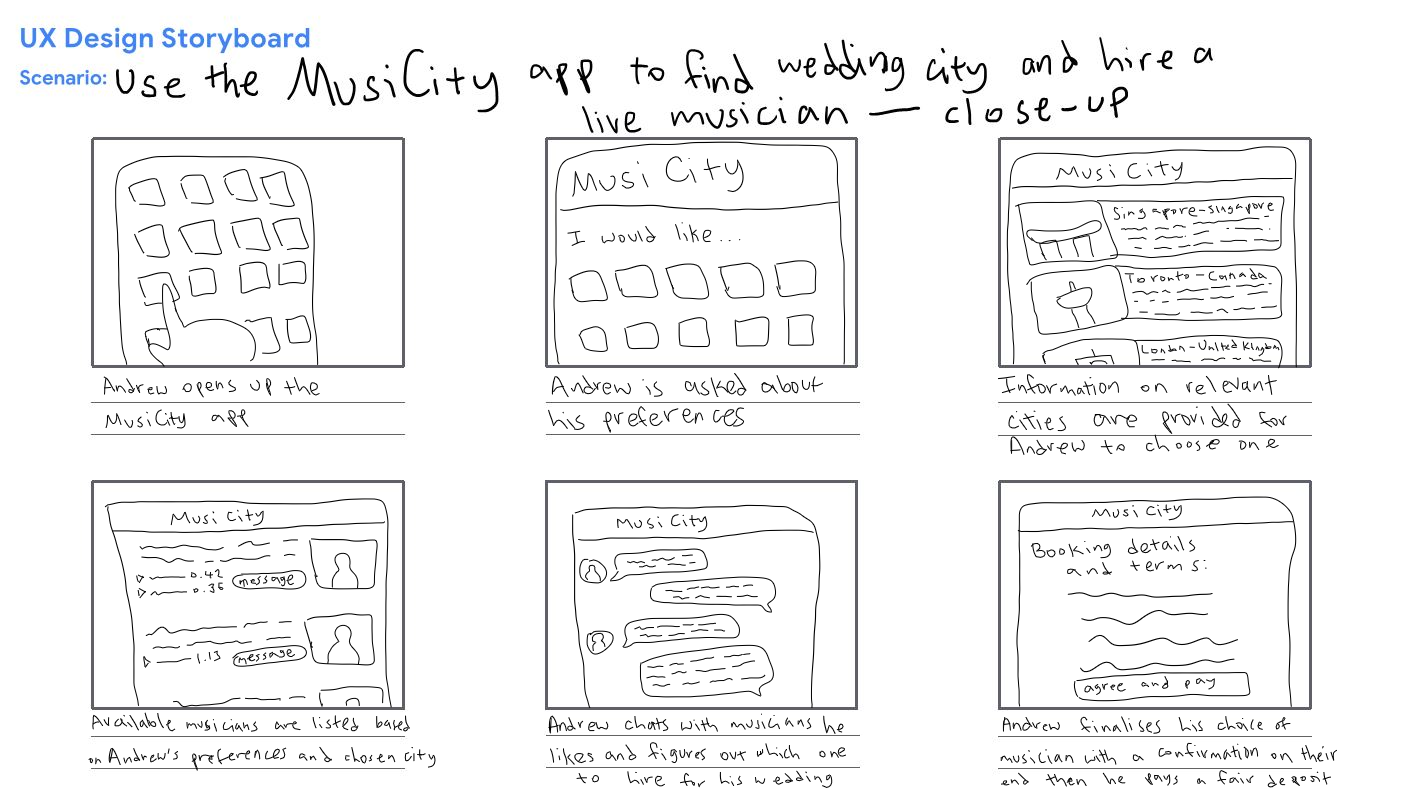
Taking the time to draft iterations of each screen of the app on paper ensured that the elements that made it to digital wireframes would be well-suited to address user pain points. For the musician information screen, I prioritised essential features (i.e. bio, audio samples, message function) to help users make their decision.
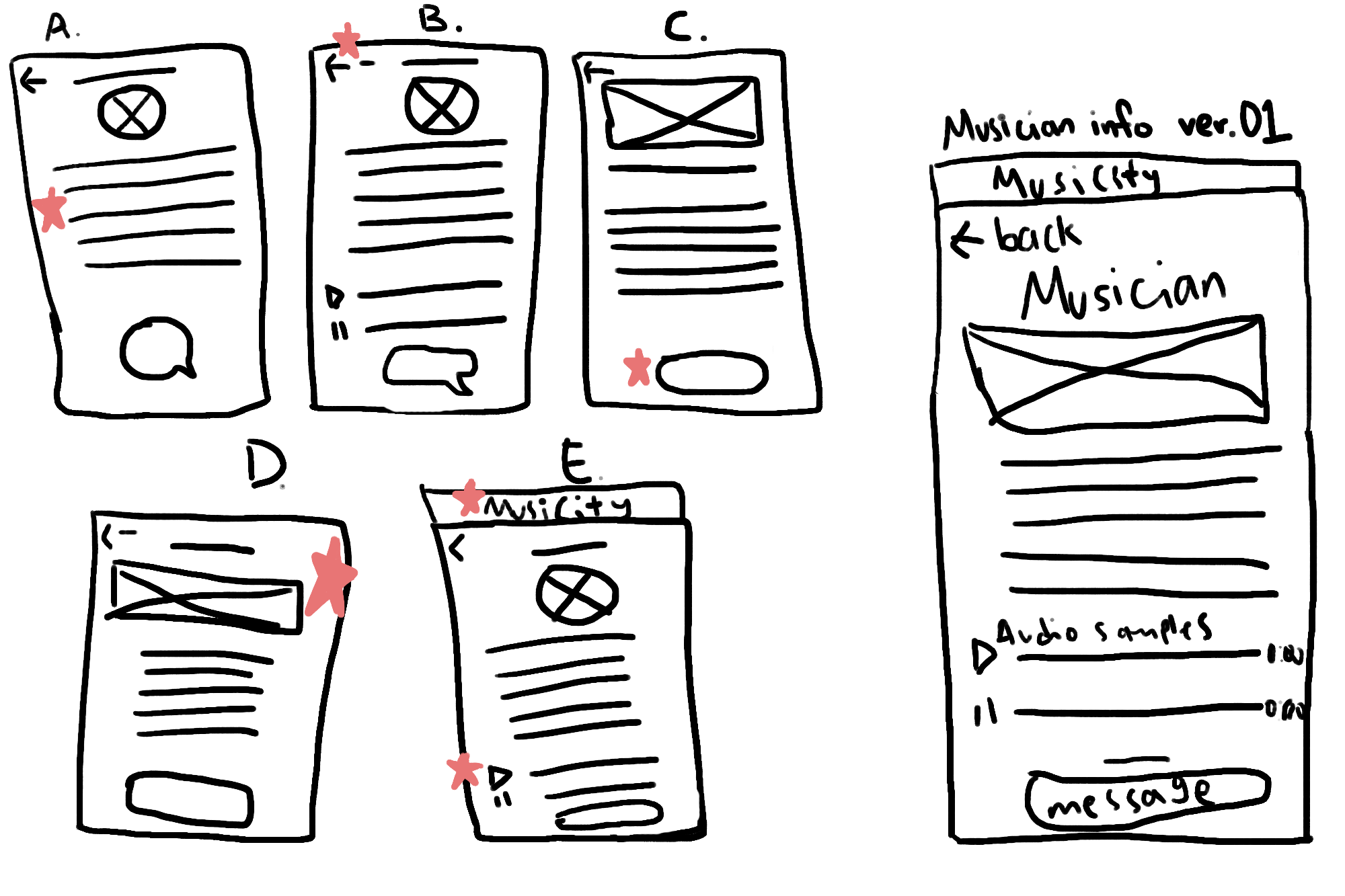
As the initial design phase continued, I made sure to base screen designs on feedback and findings from the user research. Easy and intuitive navigation was important along with tailored experiences for users.
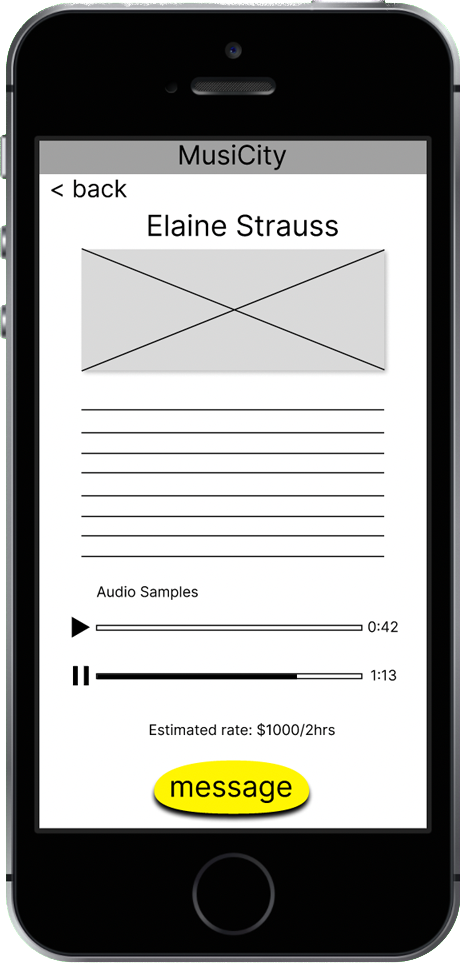
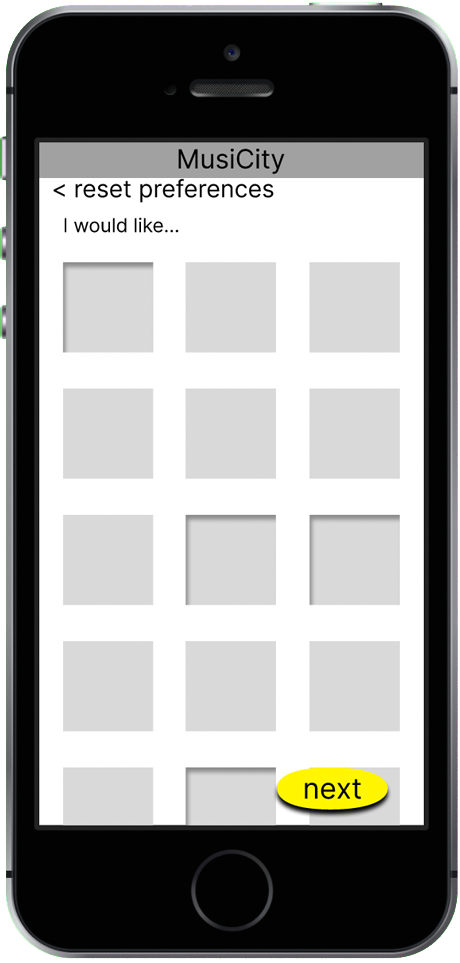
Using the completed set of digital wireframes, I created a low-fidelity prototype. The primary user flow I connected was choosing a city, messaging an available musician in that city, and then booking a musician, so the prototype could be used in a usability study.
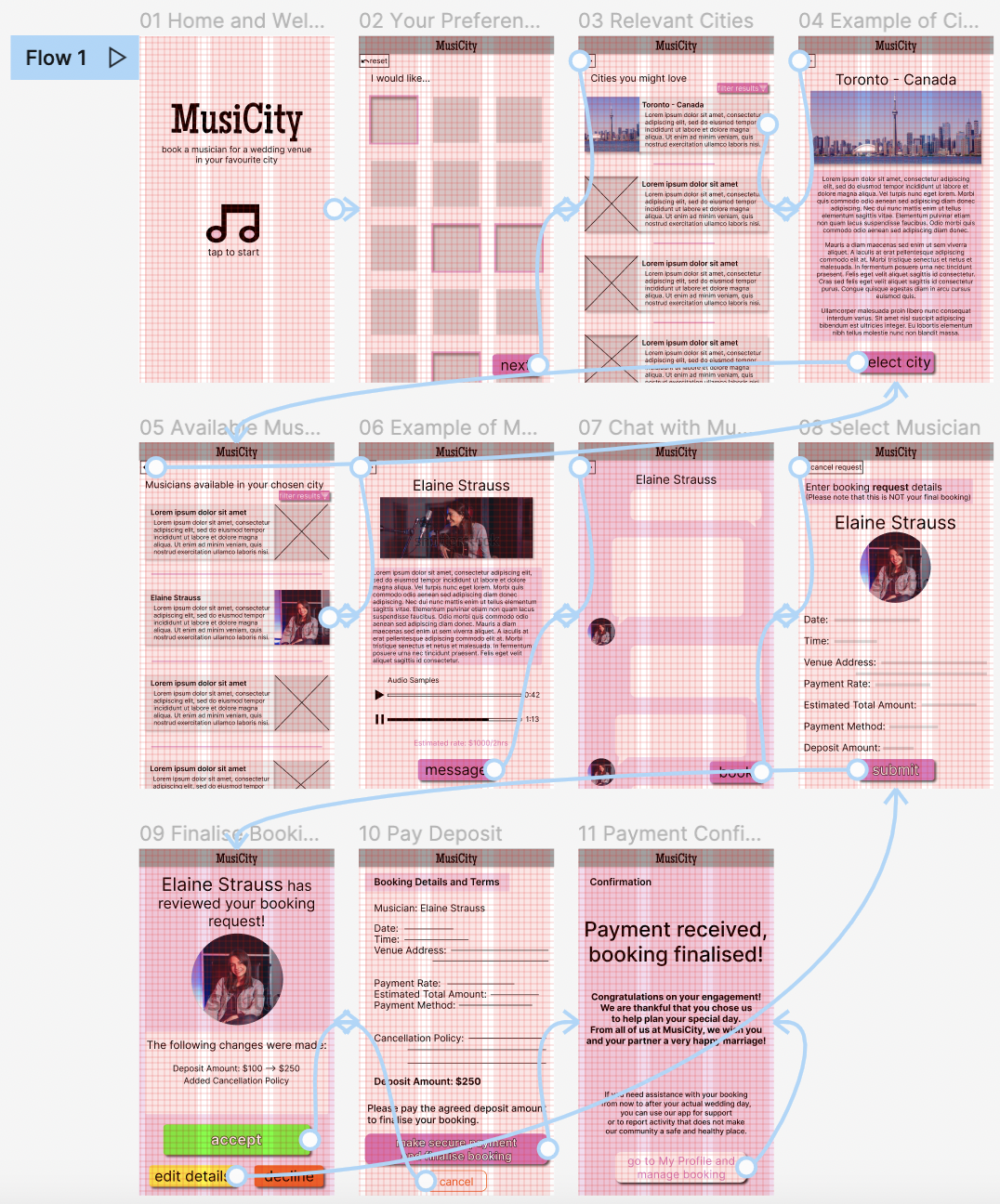
I conducted two rounds of usability studies. Findings from the first study helped
guide the designs from wireframes to mockups.
The second study used a high-fidelity prototype and
revealed what aspects of the mockups needed refining.
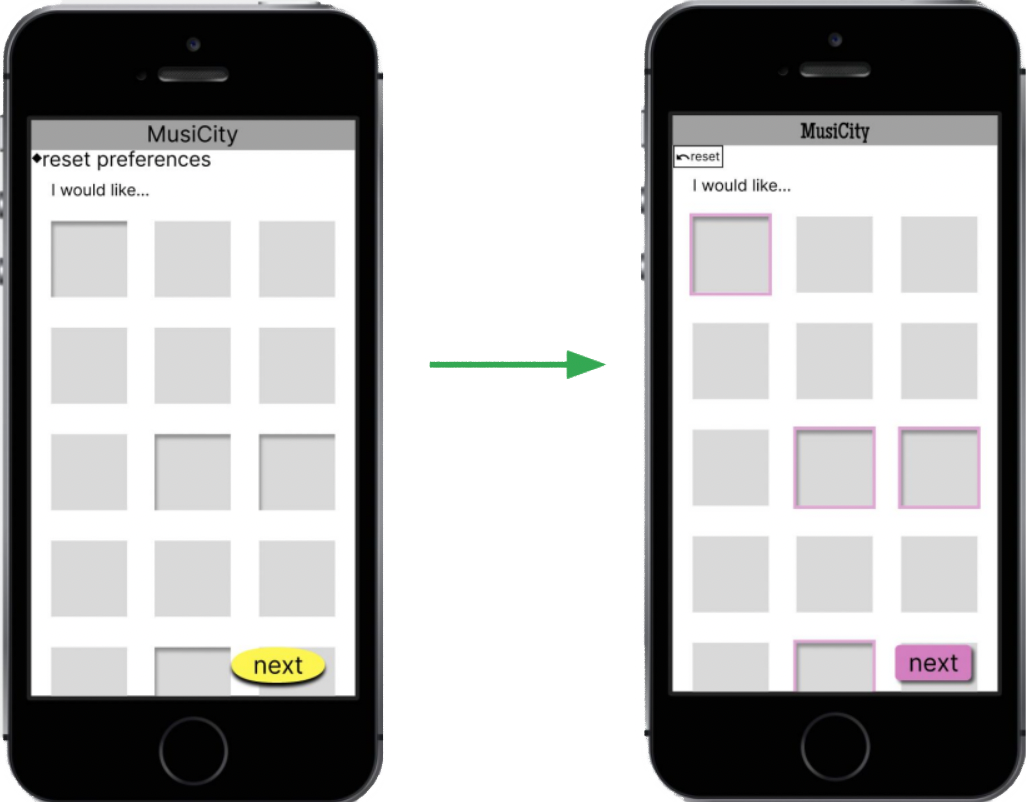
Early designs allowed for preferences selection, but after the usability studies, I changed the button size, colour, and shapes to be more consistent with the overall brand image. I also made selections more obvious by adding a border.
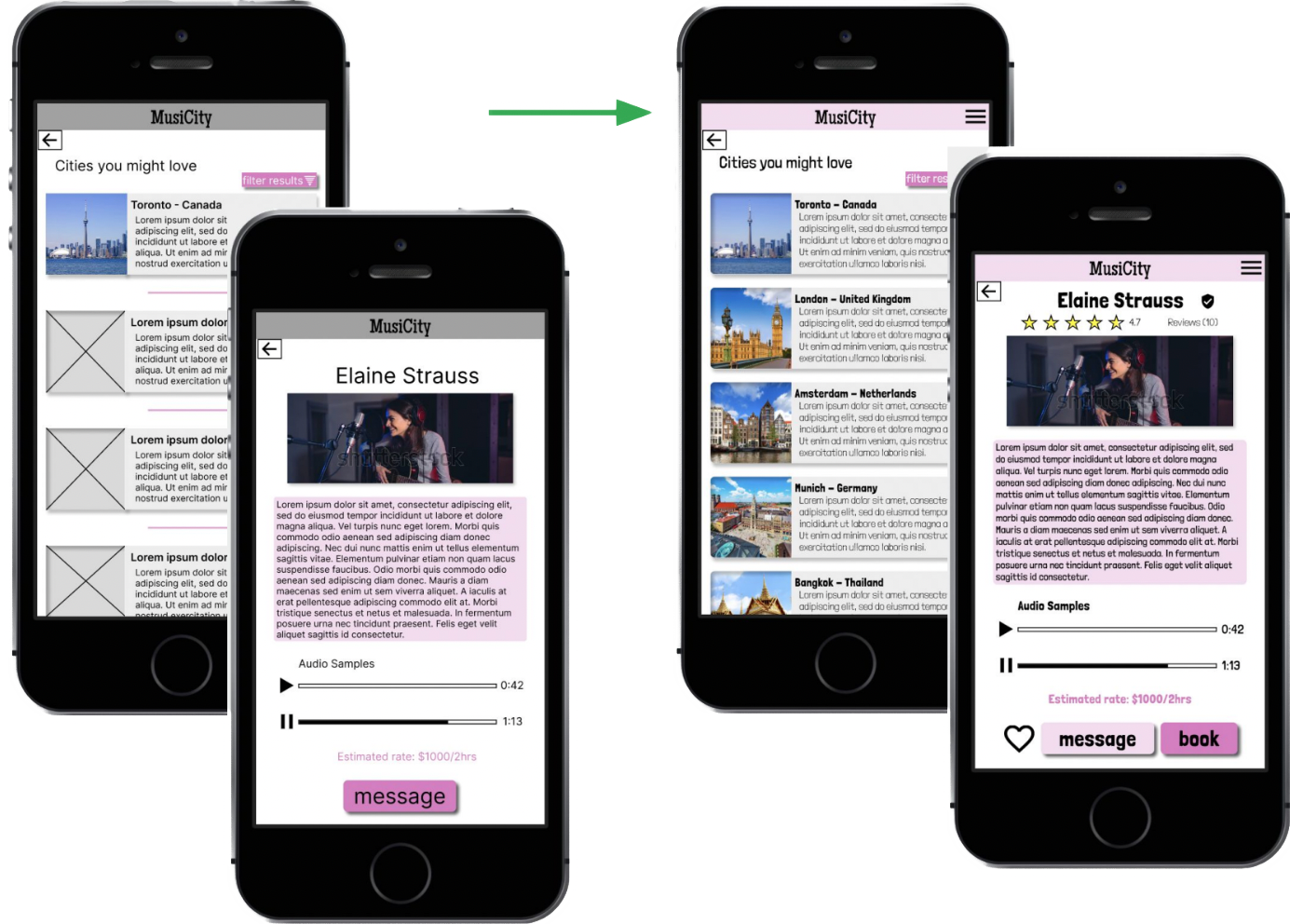
The second usability study revealed additional stylistic choices that could benefit from being more consistent, so I changed the fonts and added roundedness to most elements.
The final high-fidelity prototype presented cleaner user flows from login to booking finalisation, with different avenues of navigation.
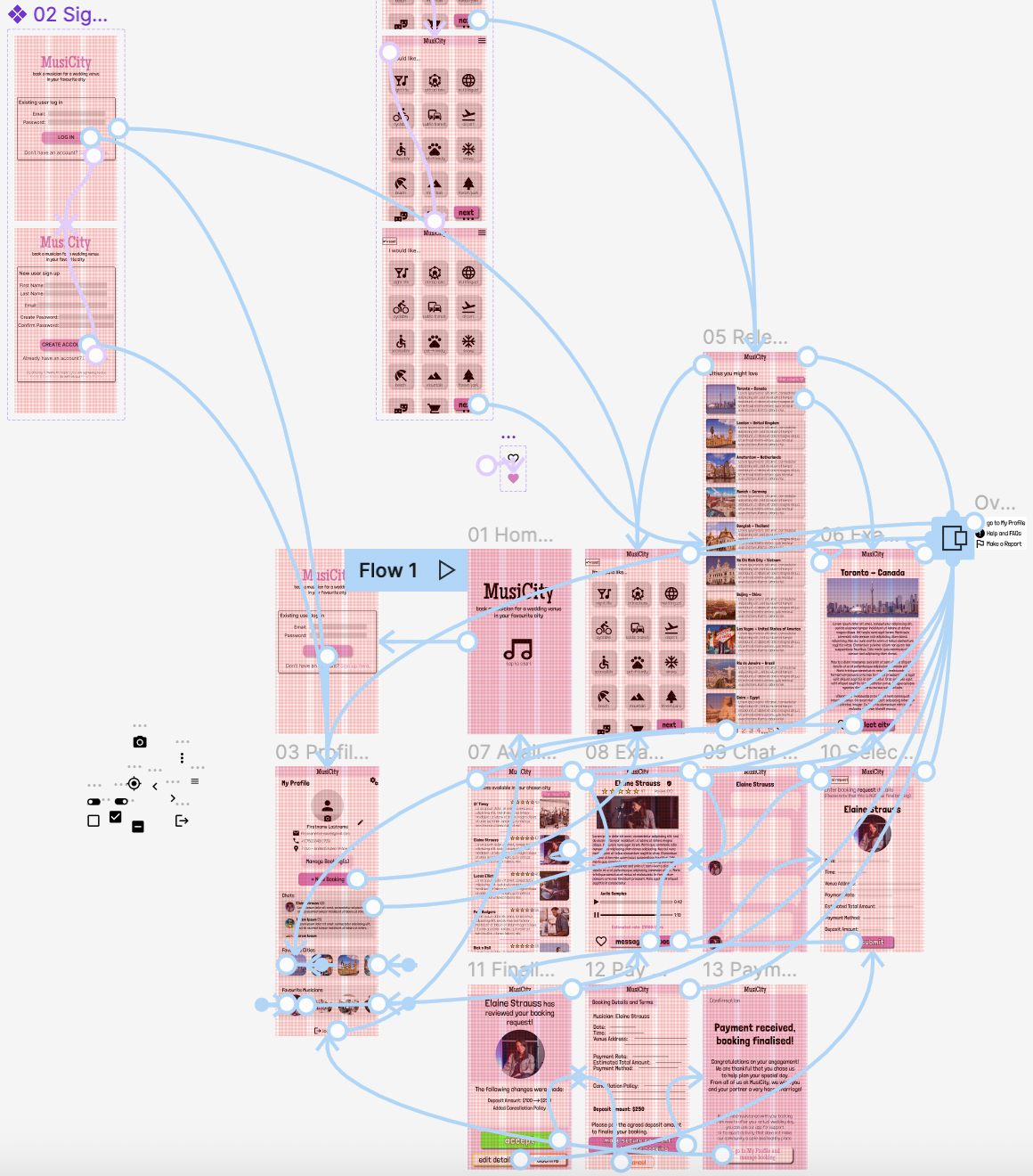
Used icons to help make navigation easier.
Avoided using tables for layout to avoid a specific semantic for screen reader users.
Avoided providing information solely through image form, and did not use images of text as well.
The MusiCity app provides a concise platform to gain information on various cities
and connect with musicians, taking away a lot of the stress that comes with wedding
planning.
One quote from a study participant: “I like that there are audio
samples that give me a preview of what the musicians sound like, and getting to chat with musicians
before booking them puts me at ease.”
While designing the MusiCity app, I learned that there are so many steps in the design process. Usability studies and multiple feedback influenced each iteration of the app’s designs, before I could come to a point where I’m satisfied with the prototype.
Conduct another round of usability studies to validate whether the pain points users experienced have been effectively addressed.
Conduct more user research to determine any new areas of need.
Further improve app design and include it in online portfolio.
